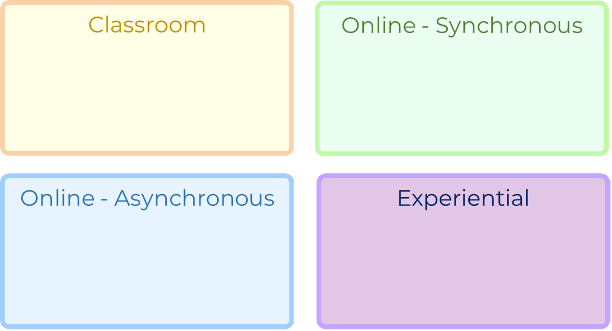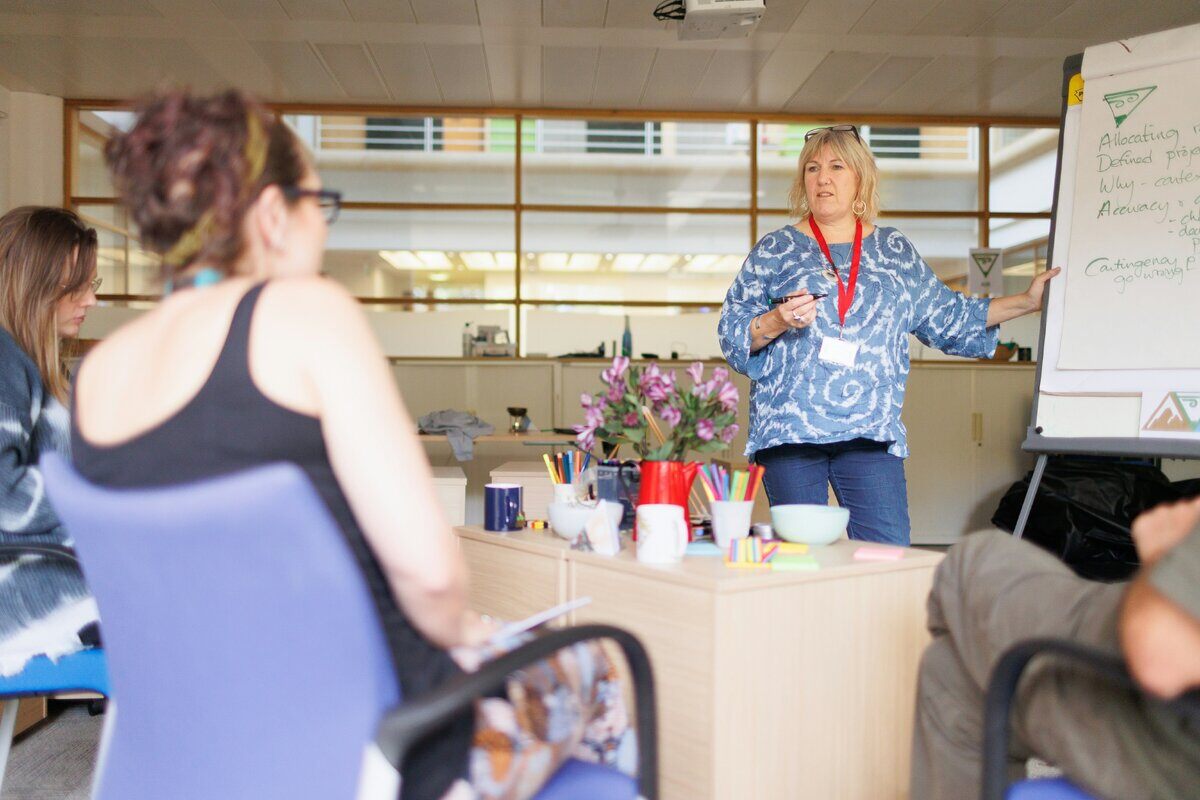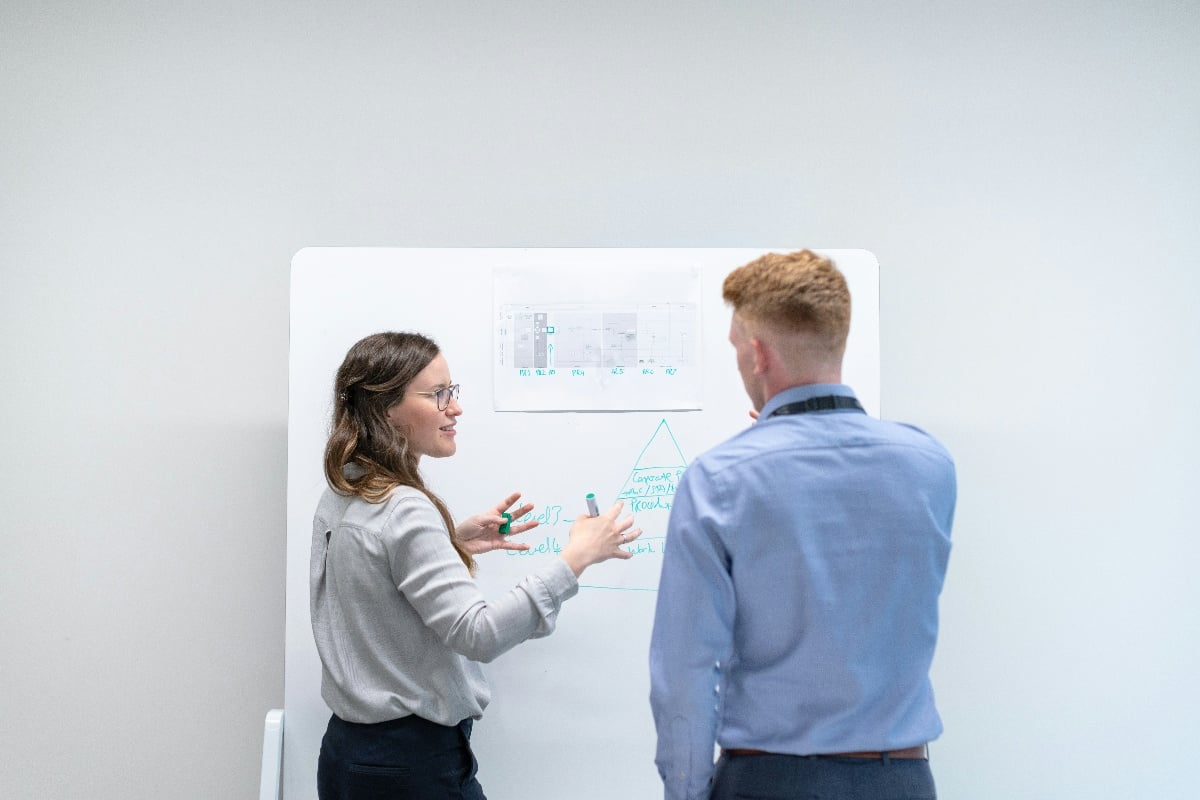
Designing Effective Training Experiences in a Post COVID-19 World
It’s difficult to think of aspects of our lives that have not been changed due to the impact of the COVID-19 pandemic.
Family gatherings when from living rooms to Zoom rooms. Masks became the latest fashion necessity. Organizations quickly found themselves with a mostly remote and distributed workforce.
How people access training experiences also shifted in a big way.
Organizations transitioned classroom training to a variety of virtual learning opportunities ranging from webinars, online modules, and even virtual conferences.
While the direct impacts of COVID-19 will likely diminish overtime, how people learn and access training opportunities has changed in a transformative way.
In this article, I’ll explore some common terms that are making their way into our training lexicon and offer some insights and predictions on the future.
Virtual, Online, and In-Person (oh my!)
Comparing the effectiveness of delivery modes has been an unavoidable pastime for many education and training professionals.
“Is in-person training better than online training?”
“Does virtual training work as well as in-person training?”
“How do I know what to put online vs. what should be in a classroom?”
These are some very common, well-intended, but over-simplified questions asked in many education and training circles. Without going too far into comparing definitions, I would like to offer a different framework for thinking about delivery mode that can be more productive from a design standpoint.
Instead of thinking in terms of delivery mode like, virtual, online, or in-person, education and training designers should consider the context of where learning happens.
The following contexts are used in the Learning Environment Modeling® system developed by LX Studio as a way to design learning experiences.
- Classroom contexts are physical spaces where interactions among participants and facilitators often occur in-person.
- Online-Synchronous contexts are virtual spaces where interactions occur in real-time through the use of communication technologies like web conferencing platforms.
- Online-Asynchronous contexts are virtual spaces where interactions occur at different times through the use of communication technologies like discussion boards or learning management systems.
- Experiential contexts can occur in virtual or physical spaces and represents the context of ‘real-world’ or on-the-job learning experiences. You can think of experiential contexts as what Josh Bersin calls, learning in the flow of work.

Setting aside the technical or access differences of delivery mode, the most impactful considerations and factors for designers is the learning contexts.
One of our primary aims when designing training should be to make the learning context matter.
In a post COVID-19 world, this will be more important than ever. Where the pandemic forced shifts from one context to another, we need to be thinking about how to best leverage each of these contexts to create the most effective, accessible, and equitable learning experiences.
Making Learning Context Matter
What does it mean to make the learning context matter? One of the first considerations for making the context matter when designing learning experiences is to think about the learning outcome.
Many training designers skip to deciding how they will deliver the training. We need to first ask the question:
What should the learner be able to do?
Thinking through this question, determine where and how the learner would need to perform this objective. We should design learning contexts that position the learner as close to the performance context as possible.
For example, if a learner will need to perform an equipment inventory, include an environment that allows them to actually perform a sample equipment inventory as part of the learning experience.
Sometimes this isn’t possible or there is pre-requisite knowledge needed before more applied learning experiences can occur. In this case, select learning contexts that balance the most efficient vs effective way to support knowledge transfer.
For example, in order to perform an equipment inventory, the learner may need to identify the various types of equipment they may encounter. The learner may access an online-asynchronous mobile module about the types of equipment and then practice the stills in an experiential context.
Designing world-class learning experiences requires many more considerations than choosing between online or in-person delivery approaches.
The COVID-19 pandemic has emphasized the importance of flexibility, adaptability, and blending of learning experiences. Our thinking patterns about how we design training experiences must shift from either/or to both/and. By selecting learning contexts that get as close as possible to performance contexts, we create learning environments that are relevant and useful for learners.
What comes next?
With the trajectory of the pandemic seeming to take a turn towards recovery, it has many training professionals asking the question: What goes back to “normal” and what do we keep doing?
These are both meaningful and challenging questions. While a strategy may have been ideal for mitigating public health risks, it may not be the best for learning and performance outcomes.
To navigate these questions successfully for your organization, go back to the basics. Think about the results you are seeking to create and connect the learning context as close to the performance context as possible.
There will certainly be training activities that return to classroom or experiential contexts; however, there may be aspects of learning experiences that benefit from being supported by online contexts. The essentials to success is considering the learning context as a central component of the learning experience design.
Keys to Success
- Design the learning context instead choosing between delivery modes.
- Align the learning context as close to the performance context as possible.
- The learning context is a critical design factor for learning experiences.
LX Studio can help navigating the challenging post COVID-19 training landscape.
Schedule a free consultation with our team today!





